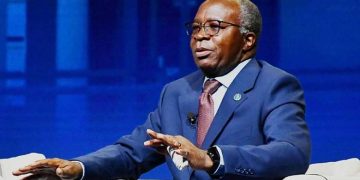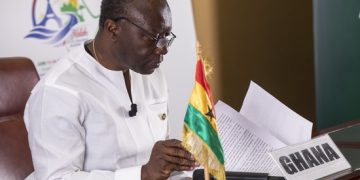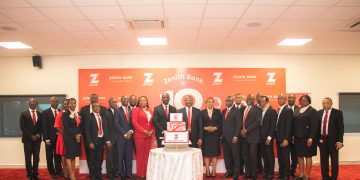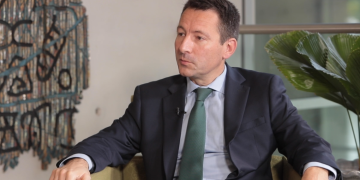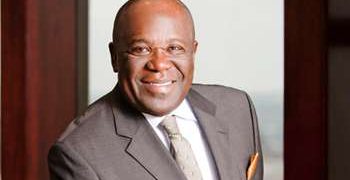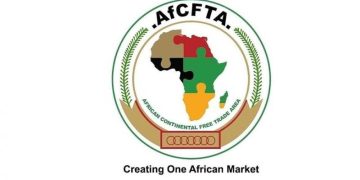Finance Minister Matia Kasaija, will this week, deliver the 2016/17 budget speech that will see the government spend more than in it did in the current financial year. Unlike in the past – prior to the Public Finance Management Act 2014 – Members of Parliament approve the Budget for the next year at least a month before end of the current financial year. On May 3, 2016, the MPs passed a budget of Shs26.3 trillion a week after it was revised upwards. The planned expenditure in the next financial year will increase from Shs24 trillion in 2015/16.
The approval by parliament gives leeway for the ruling party, National Resistance Movement (NRM), to deliver on some of the campaign promises made during the elections. The funding of the Budget will mostly come from domestic resources, according to Finance Minister, Kasaija. In tabling the motion to approve the expenditure, Mr Kasaija revealed that taxpayers would finance nearly 70 per cent of the Budget. Budget documents indicate that the Uganda Revenue Authority (URA) has been given a revenue collection target of Shs12.9 trillion in 2016/17. That means URA will be required to collect at least Shs2 trillion more from the current financial year. The URA in this financial year has a target of Shs11 trillion. By the end of the first nine months of the current financial year, URA was in a Shs242b deficit. URA described this as a temporary situation brought about the February 2016 general elections.
URA’s new target comes with a cocktail of new tax proposals that include tax hikes on some goods and exemptions on MPs allowances. However, those tax proposals alone cannot raise the additional Shs2 trillion URA will be required to collect. In a recent conversation with Daily Monitor at the World Economic Forum on Africa in Kigali, Mr Keith Muhakanizi noted that tax administration needs to be further enhanced instead or increasing rates.
“Compliance is still a big problem. We are not saying the rates are low but rather here (Uganda), the rates are competitive globally,” he said.
Some of the proposals, approved by MPs, include increasing excise duty on petrol from Shs1,000 per litre to Shs1,100 per litre. As the construction sector was only starting rebound, cement prices are set to rise again due to an increment of excise duty on a 50kgs bag to Shs1,000 from Shs50. On sugar, the government proposed Shs50 increment on two of the inputs – beet sugar and cane – raising the duty to Shs100. The manufacturers protested this, promising to pass on the cost to the consumers. The Finance Ministry insists that tax measure is minuscule and shouldn’t lead to a surge in sugar prices. Other measures include additional taxes on lubricants, cigarettes, ready to drink spirits, confectionaries, chewing gum and chocolate.
All the new tax measures will become enforceable on July 1, 2016.
Some measures like an environmental levy on second hand clothes was thrown out by MPs on the basis that it is a source of livelihood for thousands of Ugandans. President Museveni also rejected the proposal to remove the excise duty on international calls. Parliament had approved exemption based on the fact that the country was losing revenue because of people who illegally re-route international calls to look like they are originating from Kenya and South Sudan where the call rates into Uganda a low.
The new tax measures are expected to raise about Shs300 billion, according to the Ministry of Finance. In 2015/16 the economy is expected to grow at a projected low of 5 per cent as a result of several factors. The government insists that the only way to stimulate growth and collect more money is through increased expenditure. Mr Muhakanizi insists that the works and energy sectors will stimulate that growth.
“We need to devote more resources from public sector consumption to the investment side if we are to generate more revenues,” he said.
Kasaija is expected to announce that the two sectors will get a combined 30.4 per cent of the entire Budget. The education and health Budget will also get at least 12 per cent and 8.9 per cent, respectively.
External financing
In the move to grow its capacity in terms of infrastructure, some – if not most – of the projects require concessional loans from countries such as China. According to the Budget documents, external financing for the 2016/17 is expected to rise to Shs6.7 trillion from Shs5.7 trillion in the current financial year. Some of those external loans will go to the implementation of Phase III of the National Broadband Infrastructure project, industrial substations, drawdown for the upgrade of Entebbe International Airport, Standard Gauge Railway, upgrading of markets in 8 urban centres in Uganda and various roads among others.
External sources of financing are expected to be the key components for Uganda’s infrastructure projects such as the oil refinery, refined products pipeline, crude oil pipeline and the standard gauge railway.
The money from external sources is often referred to as project support and budget support.
Domestic debt
Uganda started to borrow money from the domestic market to fund infrastructure projects in 2013/14 during the reign of Ms Maria Kiwanuka as the Finance Minister. The trend has continued since but the amounts borrowed have been dropping. In 2016/17, the government will borrow Shs1 trillion by issuing treasury bonds down from Shs1.5 trillion in the current financial year.
Bank of Uganda has the responsibility of calling for bids for people who want to lend the government some money. In 2015, interest rates payable by government on this debt rose to as high as 23 per cent for some tenure, mostly due to the higher risk profile of the country.
In February 2016, government borrowed Shs195.6b through two-year and five-year bonds at rates of 23.59 per cent and 21.20 per cent, respectively. Six months prior to that, interest on the two-year bond was 16.9 per cent whereas the five-year bond averaged 16.8 per cent. This forced the government to revise borrowing to Shs1 trillion. The government has maintained a cautious approach on the domestic debt front. The largest lenders to government are the National Social Security Fund and commercial banks.
BUDGET FUNDING
The government’s budget is funded by revenue collected by the Uganda Revenue Authority (URA), grants from developing partners and government borrowings from both the local and external market. For example in the financial year 2016/17, government is expecting URA to collect Shs12.9 trillion and also receive Shs1.7 trillion in form of grants. That adds up to a resource envelope of Shs14.6 trillion in total. But the government is budgeting to spend Shs20.7 trillion.
Deficit. This means government will have a deficit of Shs6.4 trillion.
This deficit will be financed by government borrowing both from the local and external markets. In budget terms, a fiscal deficit is the excess of total government’s budgeted expenditure over total revenue the government expects to receive from both URA collections and grants from development partners.
The Shs4.9 trillion question
For the second year running, the national Budget will include a Shs4.9 trillion figure. The first submission to MPs had indicated the national Budget would be Shs21.3trillion. However, with a week to the passing of the Appropriations Bill, 2016, an amendment – offered referred to as corrigenda – was brought in by Mr David Bahati, the State Minister for finance and Kenneth Mugambe, the Director Budget in the Ministry of Finance. The amendment increased the budget to Shs26.3 trillion but Mr Mugambe revealed that there was no need to raise financing for the Shs4.7 trillion increment.
Mr Mugambe explained that the Shs4.9 trillion was for treasury redemptions and that it was already financed. In 2015/16 a similar explanation was given.
–
Source: All Africa




